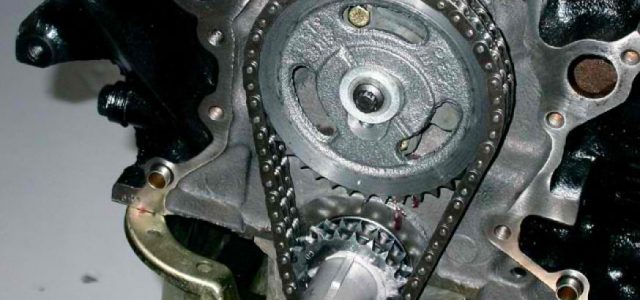

Timing Chain and Belt Care: How to Install it?
Car Repair April 18, 2019 0
After a long day at work, you finally get home, pull into your parking spot, park the car, and turn off the engine. Then you hear a loud clattering noise you have never heard before. Terrified of what disaster has now befallen both you and your vehicle, you get out, pop the hood of your car, and look inside.
How many of us would know what to do? How many of us would have any clue about where to begin getting things fixed?
What is a Timing Chain?
A timing chain is a device that serves a similar purpose to timing belts. Both devices are a part of a vehicle’s engine that helps it to operate correctly.
An engine has a series of valves and pistons that must operate in sync with each other, otherwise, the engine will fail to operate properly.
The timing chain is an integral part of the engine that ensures it will keep going. It is important to remember that these chains need to be replaced about every 40,000 to 100,000 miles unless a problem occurs sooner.
What Kinds of Problems Do Timing Chains Develop?
It is not unusual for timing chains to develop issues sooner in higher mileage vehicles. In other words, if you have an older vehicle or a vehicle that has a lot of mileage on it, then it would be a good idea to pay close attention to the timing chain.
The reason why this becomes an issue with these types of vehicles is that over time the timing chain will wear out because of stretching.
While there are mechanical similarities between chains and belts, by their design, chains will last longer than a belt. However, because they are a chain, if they break free, they are likely to cause more damage to an engine than a loose belt.
Timing chains have tensioners – a device that uses force to create or maintain tension – that help it to remain in place. And the oil pressure in the engine helps to control the timing chain, so it is important to make sure the oil pressure does not drop below normal levels.
If you keep up maintenance on your vehicle’s timing chain, there is no reason you should worry about a timing chain failing or breaking prematurely.
However, when it does break, it will normally occur when you are starting or stopping your vehicle’s engine. The reason this happens is that these are the times in which there is the greatest tension on the timing chain.
How severe the damage and what needs to be fixed is determined by how fast the chain was going when it broke free.
If the break happens while the chain was going at a high speed, it’s likely your vehicle will get bent or broken valves. The valves can potentially break off and go spinning around the cylinders, bending rods and breaking pistons. This can obviously do possible damage to the engine’s oil pan and engine block itself.
As you can see, taking care of your timing chain is important because if it goes bad, it could potentially destroy your engine. No one wants to even think about how much it could cost to repair an entire engine, especially when you could have replaced a single part to prevent the major damage.
How to Tell If Your Timing Chain is Going Out
Proper maintenance is vital for keeping the timing chain from breaking. If you suspect any damage or that it could be going bad, then you need to either see a professional or handle the problem yourself. This is one of those maintenance problems that cannot afford to wait.
If you are concerned that the timing chain is going out, get your car to a mechanic’s garage one way or another.
There are certain signs that show your timing chain is wearing out and may need to be replaced.
- If your car has times when it is idling and has a rough time with the engine shaking.
- The car has issues with backfiring.
- The vehicle is working harder than normal and seems to be struggling.
- The vehicle will not start at all which may indicate that you have had a complete failure of the timing chain.
Why You Need to Repair the Timing Chain
Besides the hassle of repair, one of the biggest reasons you should make sure your timing chain is doing well is the cost you could incur if you don’t.
- Depending on the make and model of your vehicle, the actual cost of repairs, for parts, could run you between $300 to $1,000.
- Depending on where you choose to get the vehicle worked on, the rate per house for labor can run $75 to $120.
- If the chain breaks before you get it repaired, the additional damages could cost you hundreds or even thousands of dollars more than these two costs combined.
If you decide to do the work yourself, there are multiple costs that go into this kind of job as well.
- If you purchase an individual timing chain, it could cost from $50 to $250.
- If you purchase a timing chain kit, it could run from $50 to $1000.
While timing chains breaking is not a daily occurrence, it can and does happen. It is important to know what the signs are in order to avoid more serious damage happening to your vehicle’s engine.
The longer you go without addressing a vehicle issue, the more expensive it will be when you get around to getting it fixed.
Do not wait until disaster strikes at the worst possible time. You and your family don’t need to be stranded on the roadside because you didn’t get the timing chain looked at sooner.
Steps to Replacing a Timing Chain
If your timing chain broke and you need it fixed but don’t want to seek the advice and expertise of a professional, you can Google for help and do it yourself.
This will be a time-intensive process that requires having a good knowledge of vehicles and engines. While this will include a step by step guide, it is recommended that you look at YouTube tutorials to aid you in the process.
1. Get to the Timing Chain
The first step involves getting down to the timing chain itself. This will require removing everything that is in the way of the timing chain cover.
A partial list of things you may need to remove includes alternators, air-conditioning compressors, and radiators.
You will need to set the engine at top dead center, and then use an impact wrench for removing the crankshaft pulley boat, and the pulley remover in order to get the pulley itself removed.
2. Remove the Bolts
The second step is removing all of the bolts that are holding the timing cover together.
Depending on your vehicle, you might need to remove the oil pan.
If the cover does not want to come off, you can use a rubber mallet to tap it until it comes off.
3. Get the Engine to Top Dead Center
The third step involves having the engine at top dead center.
Make note of the bright links that are on the timing chain. These links line up with certain marks on both the crankshaft and camshaft gears. Make sure the engine remains at the top dead center during the removal and installation of the timing chains.
4. Remove the Camshaft Bolt
The fourth step is removing the camshaft bolt while making sure that the camshaft and engine do not shift. It’s recommended that you use an impact wrench for this work.
The timing chain set gets removed as a whole unit. During the removal process make sure you do not lose any of the crankshaft keys.
5. Install the Timing Chain
The fifth step involves installing the timing chain. Make sure to pre-oil the timing chain.
If you are having trouble installing it, you can use a portion of bailing wire to hold the tensioners in place during the installation of the chain.
Make sure the guide pin positions on the camshaft and crankshaft key position are at 12 o’clock.
6. Align the Gear Timing Marks
Finally, you need to get the gear timing marks to align after you install the timing chain. The new timing set can be put in along with a new crankshaft seal and gaskets. Make sure to use the correct bolts.
Your New Timing Chain
While not everybody desires to be able to change their own timing chain, it pays to have a working knowledge of what one is. The more you know about how your vehicle works, and how to identify arising problems, the sooner you can see about getting things fixed and potentially saving yourself a ton of money.
You don’t have to go out and get certified or pay for a bunch of expensive tools you’ll never use again. Just read articles like these to learn the symptoms of engine issues and have a mechanic on speed dial.

No comments so far.
Be first to leave comment below.